The bushman squinted into the glare and his creased face was haggard as he scanned the shimmering distance for any sign of life.
The ground was almost bare of vegetation except for sparse patches of aromatic but very unpalatable and nutrient-deficient pioneer grasses that grazers would shun to the point of death. The drought was in its third year and the hunting grounds that had teemed with animals after two years of good seasonal rains prior to the drought were now almost devoid of game.
The situation was desperate. Already two of the small bushman clan of eighteen people had succumbed to starvation. The food the women had been able to glean above ground and below the parched soil with their digging sticks was not enough to replace the energy they expended in finding it.
Hips and ribs protruded and skin hung in loose folds as life forces ebbed inexorably away. It had been more than three weeks since the leader of the clan, who was also the best hunter of the group, had been able to shoot an animal – a small springbok also thin and weakened from lack of food. It was scarcely enough to feed three adults and was woefully inadequate to still the gnawing hunger pangs of the group as a whole.
He would have to kill a big animal if the clan was to survive. He had taken great trouble to prepare for this hunt – lives depended on it (Figure 1).
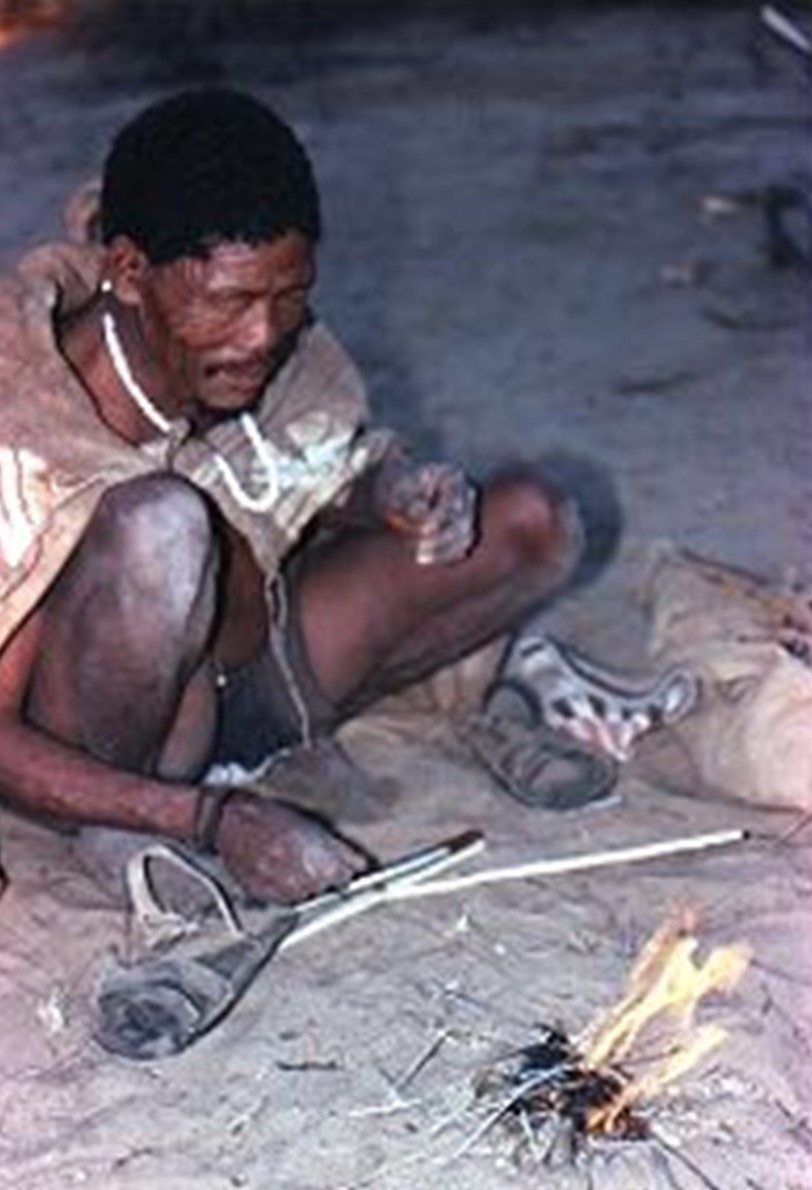
He had made fresh poison from the beetle grubs he dug up from the soil beneath the corkwood tree to ensure it was fresh and potent. Smearing a generous amount of the sticky mixture behind the small arrowhead he offered up a prayer that this hunt would be successful (Figure 2).
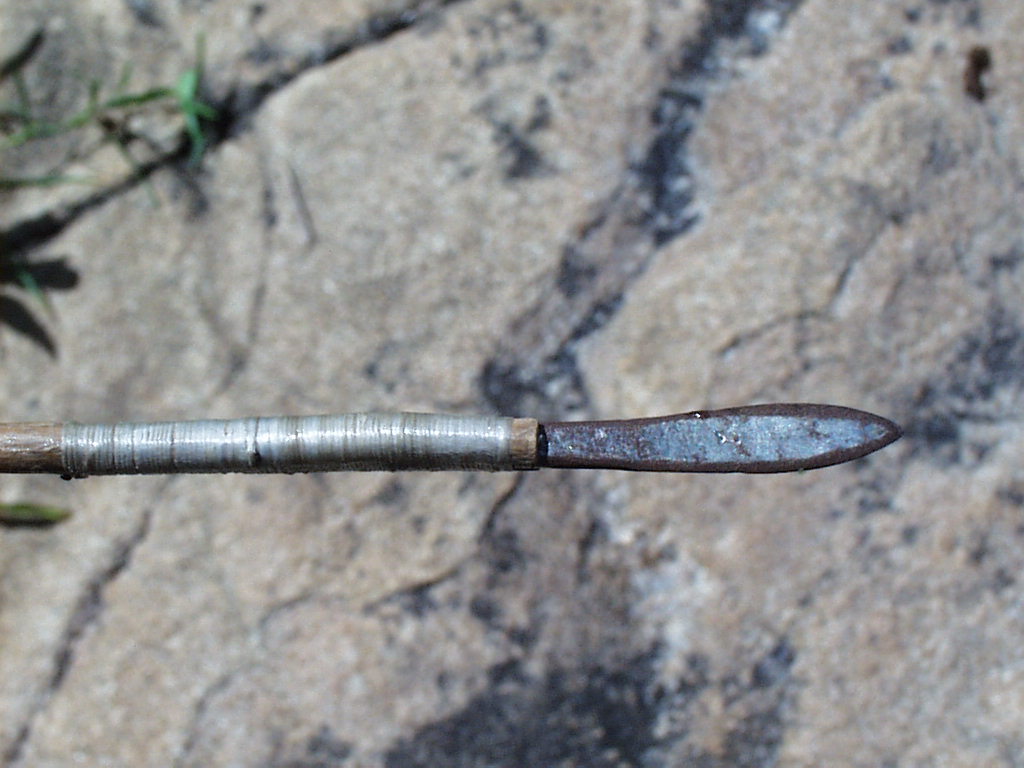
A new bowstring fashioned from the sinews gleaned from an eland he had shot three months previously adorned his raisin bush bow – he could not afford to fail. He and one of the younger men who still had some strength left to walk had left the clan’s camp at first light and headed for a distant range of low sand hills where gemsbok, springbok, and eland were once plentiful in a time that seemed very distant and tsamma melons were found in profusion and grass was abundant and nutritious.
Now the parched earth sent up little puffs of dust with each footfall.
Deep in the hills was a spring that had always bubbled freely to the surface and provided both the clan and the animals in the area with a seemingly inexhaustible supply of sweet, cold water. This supply of life-saving water had now however retreated below the surface of the earth and on his previous trek to collect water they had had to dig down almost two meters to collect a little water that slowly and reluctantly oozed up from the damp soil.
He had buried six ostrich shells filled with water close to the spring as a precaution should he visit the spring again and find it dry. It was close on a 35km round trip from the clan’s camping site to the spring and back and should he find the spring dry and have no emergency supply stashed away it could mean his death and the death of clan members.
It took them nearly four and a half hours to reach the base of the low hills and another hour to reach the spring. It was dry even at the bottom of the pit they had dug. Using a stick to dig down deeper the soil became slightly damp but no water seeped up to the surface. Motioning his companion to stop digging he walked about 50m away and dug down into the dry sand beneath an old stump. Removing one of the ostrich eggs he had stored for just such an eventuality he removed the plug and passed the container filled with precious life-sustaining fluid to the younger man who carefully took two mouthfuls – careful to not spill a drop – before handing it back to the older man.
At forty-three years of age, he was old for a bushman but his eyesight was still keen and his tracking skills had been honed by thirty-eight summers of active hunting – day after day. The faint track, almost eroded by the hot wind blowing from the west, did not escape his gaze (Figure 3).
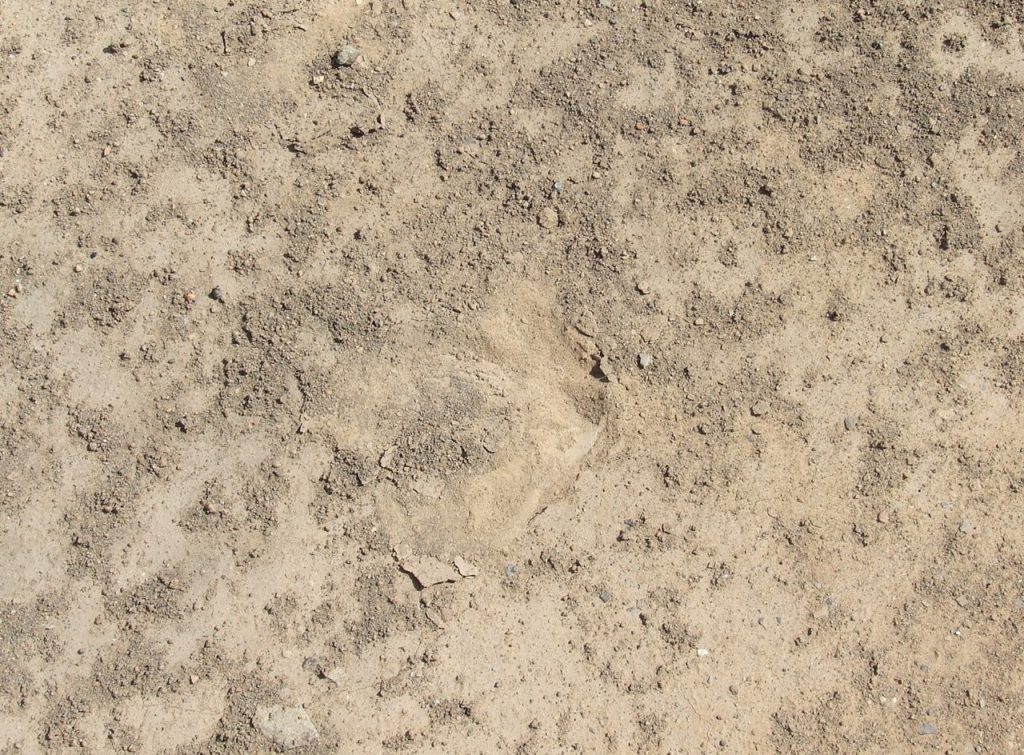
Dropping onto one knee his hand ran lightly over the track as he examined it with a practiced eye. It was not fresh but hopefully, there was still enough daylight left to track it down and get an arrow into it. Hardly pausing to catch breath the bushmen set off into the shimmering heat in search of the quarry they so desperately needed.
The gemsbok had headed north and the crosswind was in their favour as they searched the ground for a smudge here and a broken blade of grass there which indicated sign of its passing. Their lips were parched and dry as sandpaper and their bellies growled with hunger as hour after hour passed and the sun began to dip to the west.
Even at this late afternoon hour the heat reflecting off the baked earth was like a furnace but they were dogged in their determination to find meat for their starving clan members. The consequences of failure did not bear thinking about……The gemsbok had rested in the shade of a leafless Acacia thorn tree during the scorching heat of the day and had allowed the bushmen to gain on it.
With two hours of daylight left they found fresh tracks (Figure 4) and a small pile of fresh dung pellets (Figure 5). Their flagging spirits lifted and hope was rekindled for they knew the gemsbok was close by. The challenge now remained to get within bow range which was difficult in the open terrain which afforded little cover for stalking. It would be soul-destroying if the gemsbok spotted them and ran off into the distance.
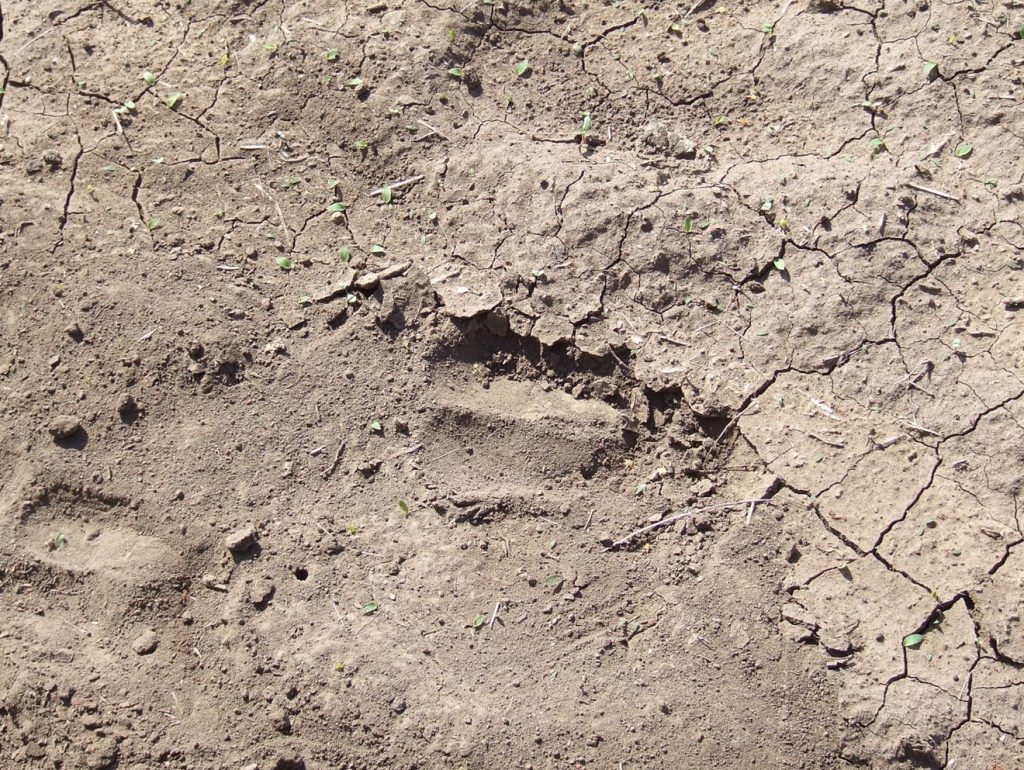
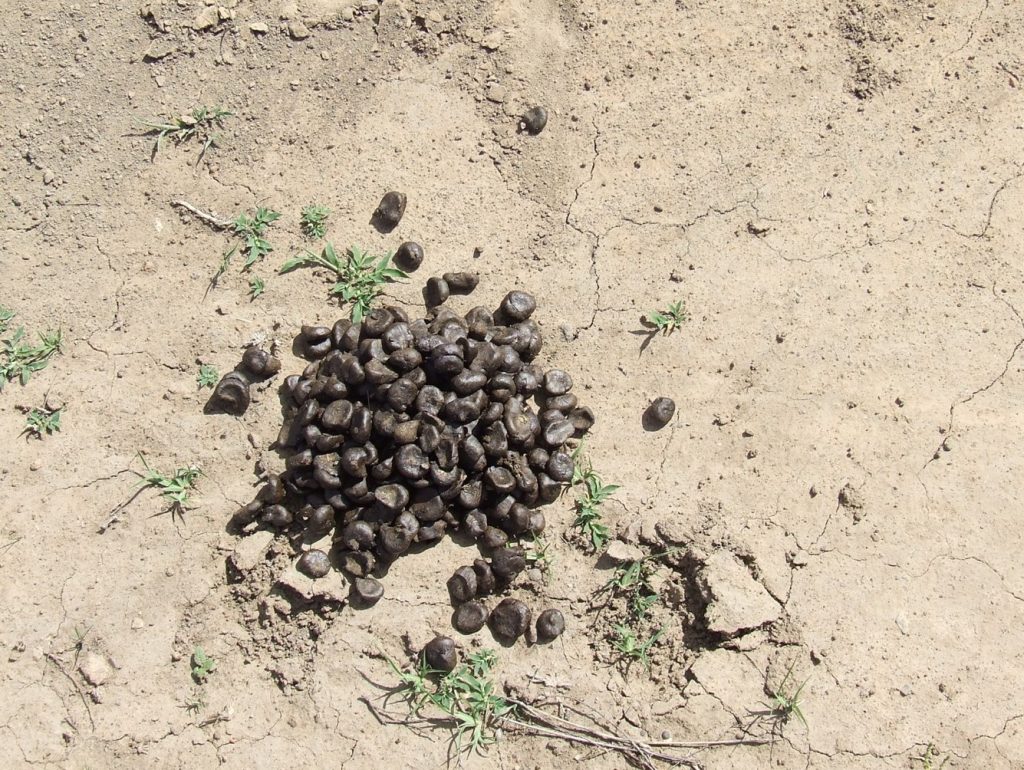
Picking up a stick that was about as long as his legs the old bushmen quickly and roughly shaped the one end into a rounded shape. It was then they spotted the animal which would mean life or death to the clan – about four hundred meters away walking slowly towards them.
Quickly signaling the young man to flatten himself behind a low termite mound and checking to see that the wind was in his favour the old man held the stick up above his head and walked in a crouch, angling towards but not directly at the gemsbok, to close to within bow range. Three hundred and fifty meters, three hundred, two fifty……Suddenly the gemsbok spotted the bushman and with its head lifted, nostrils flared and ears rotated towards what initially appeared to be a threat, its muscles tightened and bunched in preparation for flight.
The sense of heightened alertness was however mingled with curiosity and the large antelope took a few mincing steps closer. It could not detect any smell of danger and the strange apparition looked vaguely familiar ….ah an ostrich! The level of alertness dropped from red to a cool amber and then to green. The distance between the hunter and its quarry shrunk until at forty five meters the gemsbok again became suspicious.
The bushman realized this would be his only chance. His bow unlike its modern counterparts had a maximum effective range of about 40m and this shot was 5m beyond this. The one advantage he had was that he was not dependent on the arrow’s ability to penetrate deep into the vitals to affect a kill.
All he would have to do was ensure that the arrow penetrated into muscle somewhere on the animal’s body to deposit the lethal poison which would then be absorbed and circulated and within a few hours lead to heart and respiratory failure and death. Dropping slowly to one knee he nocked the arrow and pinching the string between thumb and forefinger he came to full draw.
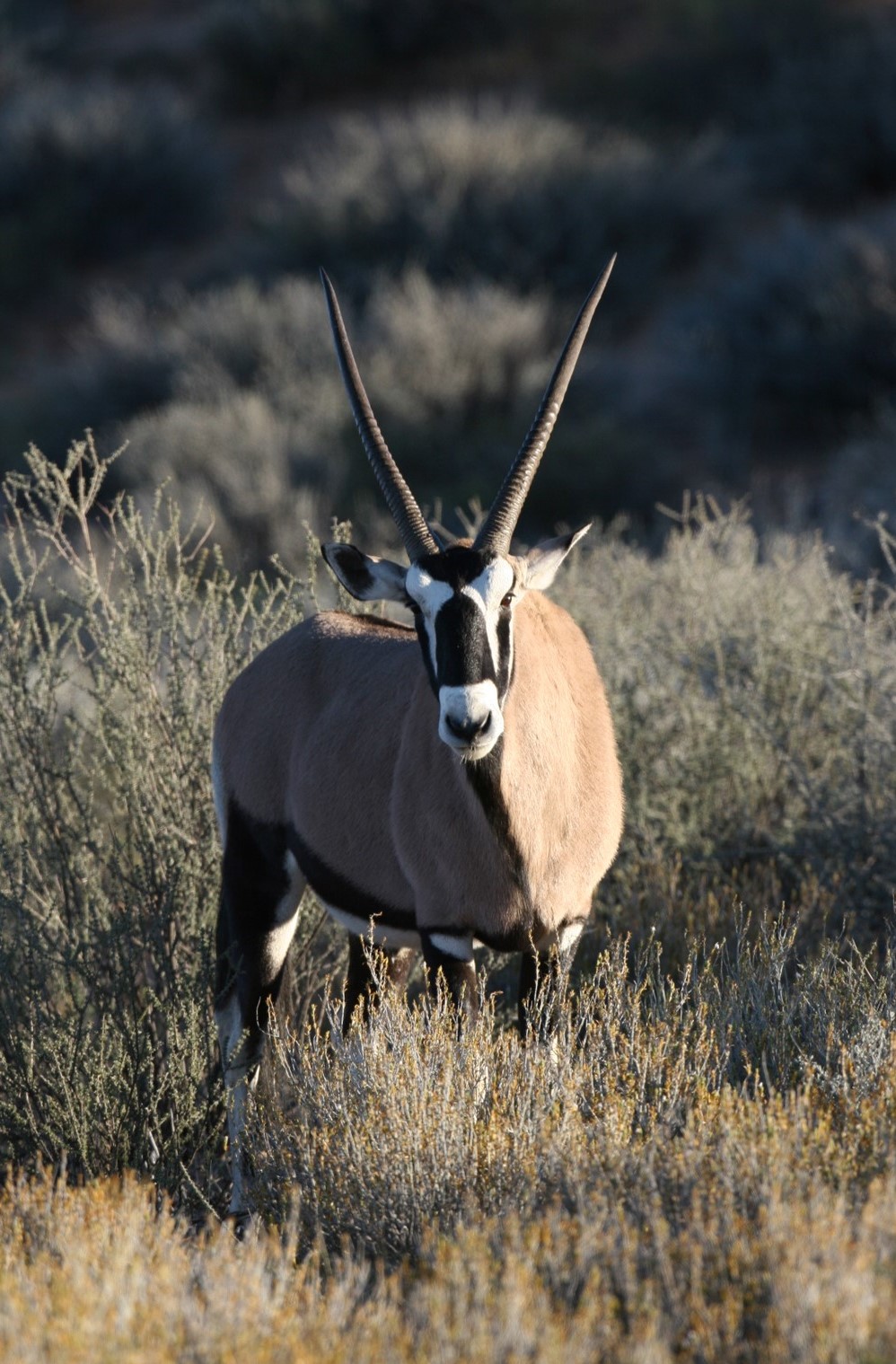
He had no sights on the bow but years of shooting had taught him the eye-hand coordination and distance estimation of instinctive shooting skills. The gemsbok was facing him head-on presenting the smallest target area. Focusing on the deep chest the bushman released the arrow willing it to hit his point of aim. The arrow swished through the air and for a moment the bushman thought the arrow would miss as the gemsbok wheeled to run away but no, as it turned side on he saw the arrow hit low on the right shoulder. He had to temper his elation for fear of increasing the animal’s flight distance and with the patience born of time sat down quietly to allow the poison to begin its work. He knew the task was far from finished. The crimson sun was being swallowed by the western horizon and soon it would be dark but they would start the follow up within a few minutes once the gemsbok had overcome its initial fright of being hit by a strange object and track it until they could no longer see to try and limit the distance it could put between it and themselves. The arrowhead had dislodged as it was designed to do and the old hunter collected the detached shaft in the hope that it would be used again in some future hunt …. if there was to be one.
For an hour longer they kept on the spoor until it became impossible to see. It would be pointless wandering around in the dark and so they began to prepare for the night. The relentless and unforgiving heat of the day began to dissipate once the sun had bedded itself down and the two companions began to prepare for the bitter cold they knew the night would bring. They indulged themselves with two swallows each of the ostrich egg water, and twirling two sticks together built a small fire from the few twigs they could scrounge setting aside a small pile they knew would not last the night. Then cold, hungry, and bone weary they wrapped their thin karosses around their scrawny shoulders to wait out the night. In the distance, a jackal called and the stars hung like drops of liquid crystal in the clear night sky. The night seemed endless and the two bushmen huddled closely together sharing what remained of their body heat.
As soon as the eastern horizon brightened with a pre-dawn glow of soft orange and there was enough light to see by they were on the spoor again. After two hours it became evident that the poison was taking effect as the gemsbok was wandering aimlessly and at times even circling back on itself. Shortly before ten a.m., they saw it lying in a shallow depression where it had fallen. Their joy could be contained no longer and the two men danced with joy around their fallen quarry and gave thanks for a successful hunt. Out came their small skinning knives and soon they had cut a small piece of meat each on which to indulge themselves. They made a small fire and skewered the meat on sticks to cook whilst they were butchering the carcass. They did not eat much as their bellies had shrunk and being bushmen they had the interests of their small clan at heart and would save the bulk of the meat for them. Using the skins as knapsacks they loaded as much as they could onto their shoulders and set off back to the camp close on twenty-eight kilometers away if they took the shortcut they knew of which was a harder walk but closer. They would reach camp hopefully just before nightfall but their legs would have to carry them there – there was no other way.
One of the bushman children spotted them coming, burdened down and staggering under the weight of the meat they carried. Shouts of excitement spread quickly throughout the camp.
That night they would feast and perhaps for two days after that and then the cycle would repeat itself. Kill to survive. And before the rains would come they knew that they would bury more of their people for the hunting would get progressively more difficult and food scarcer.
What a contrast to us modern-day hunters who kill to have hunted and do not have to, as a matter of life or death, hunt to kill. Even if we come back from the hunt empty handed there are lavish meals awaiting us. We sleep in comfort – five-star hunting lodges on the upper end of the spectrum and if we really want to “rough it” we sleep on camp stretchers in luxury safari tents with en suite toilets and hot showers. We arrive back at camp to a roaring bonfire prepared by the camp staff and there is enough to drink to start a lucrative shabeen. We are driven to the hunting grounds in vehicles and our scoped rifles with fast, flat shooting bullets make shots at 250m nothing out of the ordinary.
How different to real hunters who had only their feet for transport and weapons with severe limitations.
